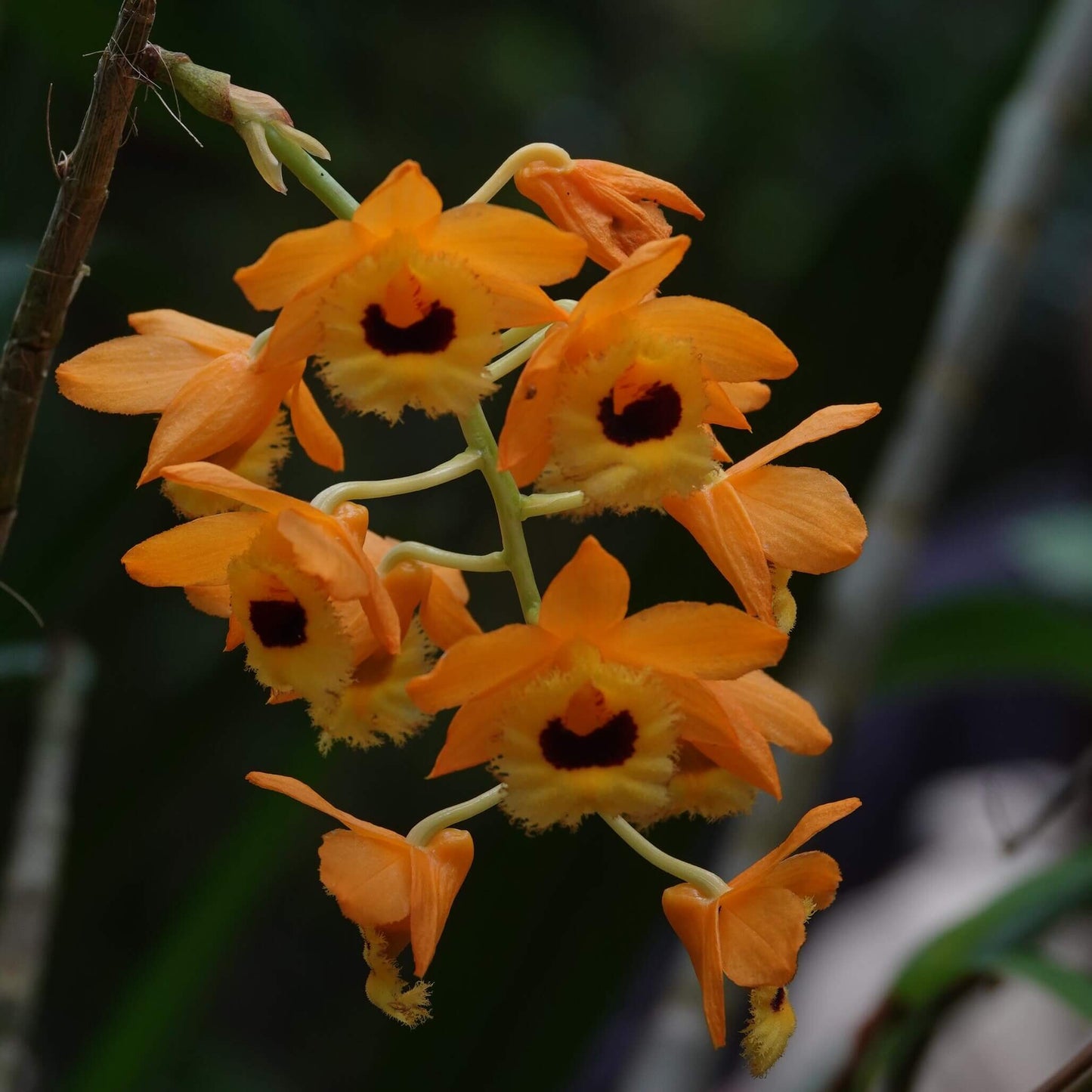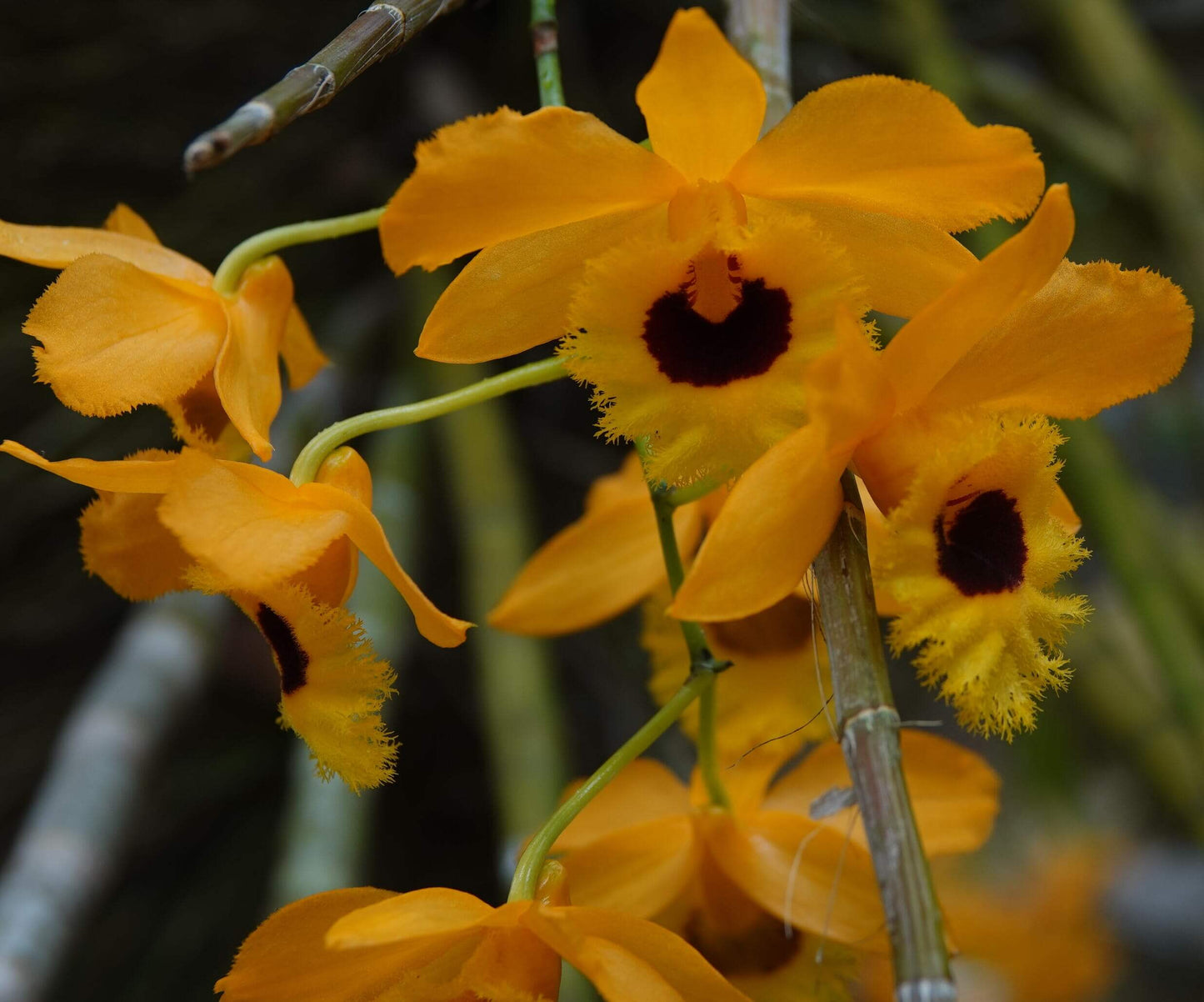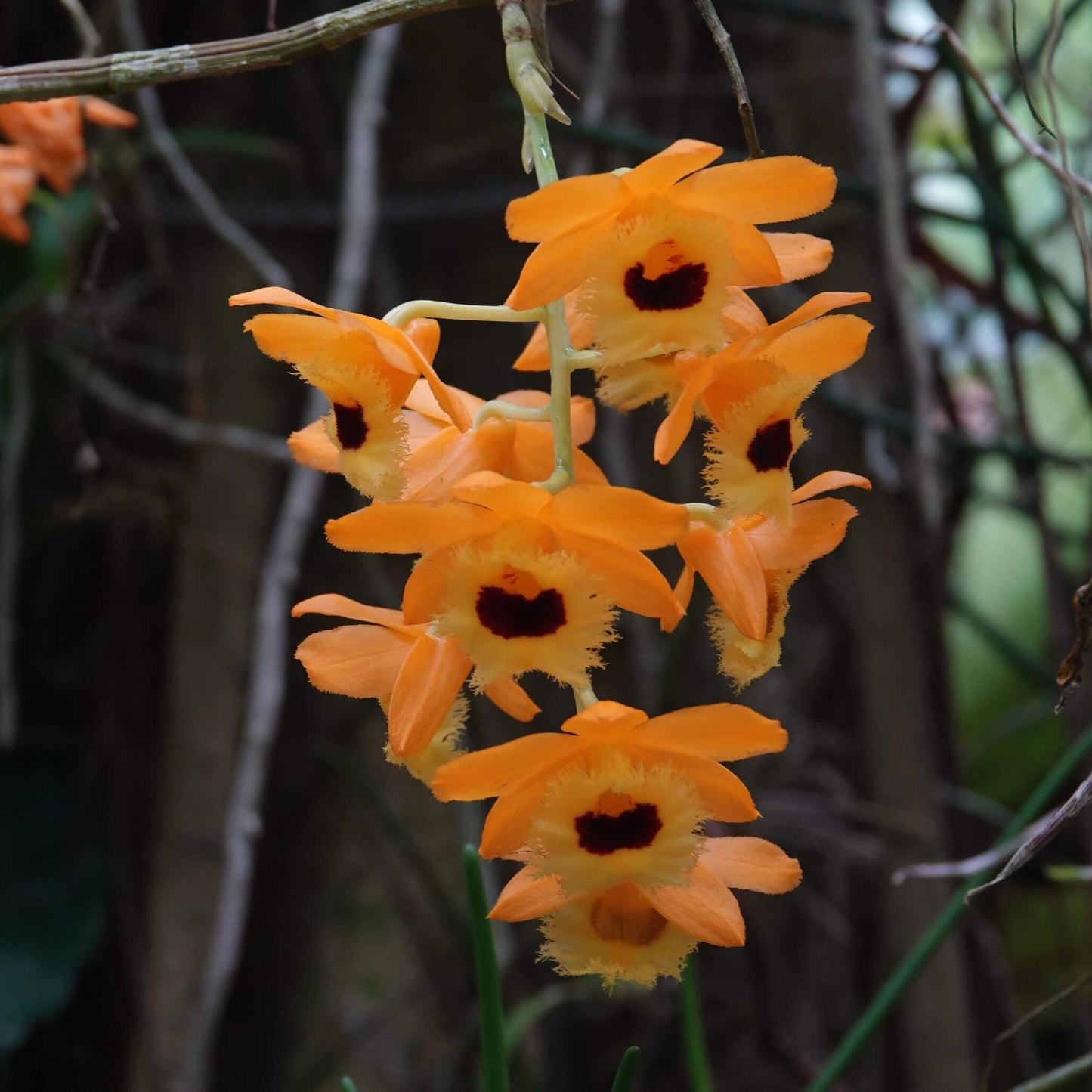Begin With Plants
Dendrobium fimbriatum
Dendrobium fimbriatum
Couldn't load pickup availability
Dendrobium fimbriatum is native to the Himalayas (India, Nepal, Bhutan, and Bangladesh), southern China (Yunnan, Guangxi, and Guizhou), and Indochina—including Myanmar, Thailand, Laos, Vietnam, and Peninsular Malaysia. It grows epiphytically on trees, lithophytically on damp rocks, or terrestrially in humid, mossy forests at elevations ranging from about 500 to 2,400 meters.
Features:
-
Growth Habit: Large, deciduous orchid featuring long (60–180 cm), erect to pendulous, spindle-shaped canes that age to yellow-green and often furrowed.
-
Leaves: Oblong to lanceolate, leathery leaves (8–15 cm long), arranged in two ranks; these are deciduous and may drop after 2–3 growing seasons or during dormancy.
-
Flowers: Pendant inflorescences (up to ~18 cm long) appear from upper nodes on leafless canes, typically bearing 6–15 crystalline-textured flowers (4–7.5 cm across). Petals/sepal hues range from pale yellow-green to deep orange-yellow, with a fringed lip marked by a dark maroon or orange spot (“oculatum” variety).
-
Fragrance: Flowers emit a sour or slightly off-putting scent.
-
Bloom Time: Primarily in spring (March–May), but capable of blooming nearly year-round if conditions allow.
-
Flower Longevity: Individual blooms last 7–10 days.
Care Tips:
-
Light: Prefers bright, indirect light. Avoid harsh midday sun. Can tolerate partial shade (50–70% shade).
-
Temperature: Grows well under intermediate to warm conditions—daytime around 18–28 °C (64–82 °F), nighttime cooler; winter rest chill (nights near 10 °C) can encourage flowering.
-
Watering & Rest: During active growth (spring–summer), keep media moist. In winter, reduce watering to initiate dormancy and bloom.
-
Humidity: Moderate to high humidity (~55–90% depending on season). Misting can alleviate cane shriveling during drier periods.
-
Substrate/Mounting: Thrives mounted on cork, tree fern, or in baskets. If potted, use a fast-draining, airy bark-based mix.
-
Fertilizer: Feed lightly every two weeks during the growing season with balanced orchid fertilizer; reduce during autumn and winter.
-
Pruning & Propagation: Remove only spent flowers—not leafless canes unless shriveled. Keikis (plantlets) form and can be used for propagation when roots are sufficiently developed.
-
Pests/Diseases: Susceptible to scale, mealybugs, aphids, and spider mites; ensure good air circulation and inspect regularly.
Share





